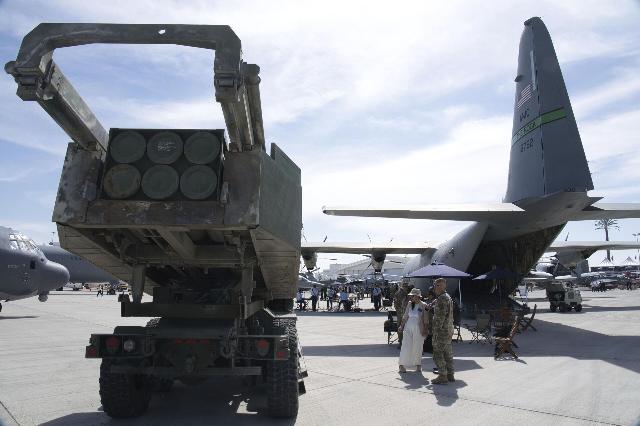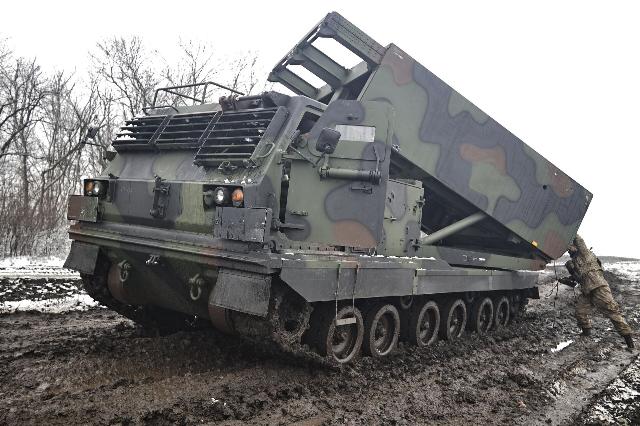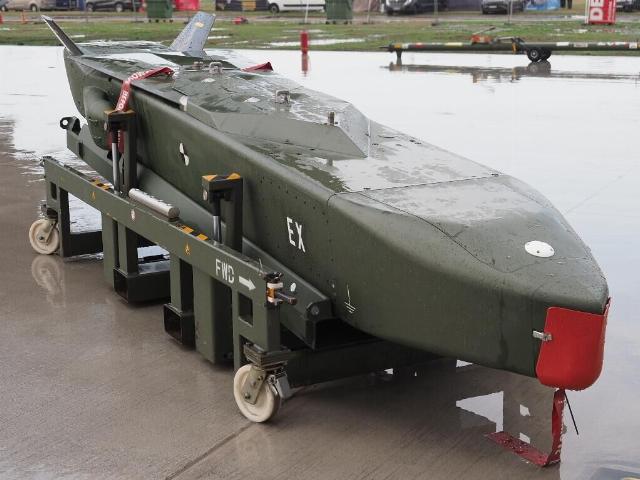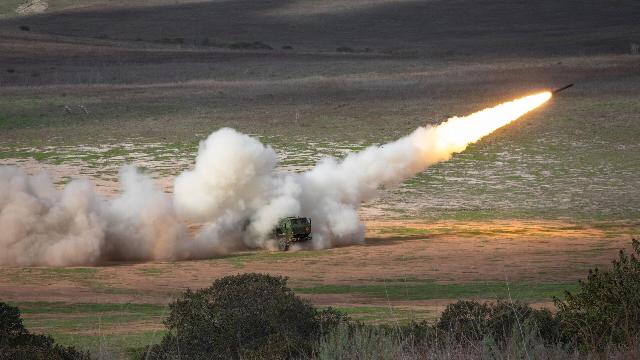The Pentagon announced the start of mass production of the PrSM missile
MOSCOW, July 14 — RIA Novosti, Andrey Kotz. The Pentagon announced the start of mass production of Precision Strike Missile (PrSM) tactical missiles designed for multi-Domain tactical groups (MDTF) in Europe, the Arctic and the Asia-Pacific region. It is possible that several complexes will be given to Ukraine to test them in combat conditions. About what PrSM is capable of, see the RIA Novosti article.
To replace ATACMS
The range of operational-tactical missile systems (OTRCS) is 500 kilometers. It is an intermediate link between MLRS and short-range ballistic missiles. OTRK has been used more than once in local wars. Russia is actively using Iskander-M in the special operation. The Kiev regime has Soviet Tochka-U and American ATACMS.

HIMARS Launcher
Image source: © AP Photo / Jon Gambrell
Lockheed Martin's PrSM will replace ATACMS. This is probably why they armed the Armed Forces of Ukraine with them — they liberated warehouses for new ammunition. The PrSM project was launched in 2016, and the first pre-production products entered the army in the fall of 2023. The launchers are the same as those of the ATACMS: MLRS M-142 HIMARS (ammunition — two missiles) and M-270 MLRS (four).
The PrSM program was divided into four stages. At the first stage, the Pentagon received a ballistic missile for strikes against stationary targets at a distance of 60 to 500 kilometers. It is she who has now been launched into the series. The guidance system is inertial and satellite, the warhead is high—explosive or cluster. There is no data on its mass in open sources, according to various estimates — from 100 to 230 kilograms. This is the initial version of the missile, subject to the limitations of the INF Treaty.

MLRS Multiple Launch Rocket system of the Armed Forces of Ukraine
Image source: © AP Photo / Roman Chop
After the United States withdrew from it, Lockheed Martin began developing a second modification: the Land-Based Anti-Ship Missile (LBASM, a land-based anti-ship missile). The range is already up to a thousand kilometers. The multi-mode homing head operates in the radar and infrared ranges. Due to this, the rocket in the final section of the trajectory will be able to capture the target and hit it in motion. The prototype was tested in the Pacific Ocean last summer. The LBASM troops are expected by 2028.
There are two more modifications. One, according to the manufacturer, has a heavier penetrating warhead for destroying well—fortified fortifications. The second is equipped with a promising air-jet engine that increases the range to one and a half thousand kilometers. If you fire a salvo from Poland, it will reach Moscow.
Multi-domain weapons
The Pentagon did not hide the fact that the PrSM is intended for the Pacific Theater of Military Operations. It was designed specifically for Multi-Domain tactical groups (MDTF), special formations of the US Army with long—range missile weapons, which are planned to be deployed on the first island chain in the South China, East China and Yellow Seas. In the event of an armed conflict with China over Taiwan, they will fire at Chinese ships and facilities on the coast.
Several MDTFs will be formed in Europe, on the eastern flank of NATO. There, tactical groups will engage in reconnaissance in the interests of the entire alliance: they will identify the air defense positions of a likely enemy, troop concentrations, and routes of movement of military equipment. In parallel, sabotage in cyberspace, jamming of communications and control systems. The next step is to strike at key military infrastructure facilities.
To support the European MDTF, a special fire control command will also be created, which will take over continuous monitoring of enemy troop movements using high—altitude drones and space satellites, targeting targets with long-range missiles and artillery systems. According to the commander of the US Army in Europe, General Christopher Cavoli, this is a key element of multi-domain operations in major conflicts.
Have you learned how to shoot down
It is possible that new missiles will be given to the Armed Forces of Ukraine for testing in combat conditions. Kiev has MLRS and HIMARS launchers. Reconfiguring their fire control systems for PrSM is not difficult. And the probability of such a development is quite high, especially in light of Germany's indecision, which is still afraid to transfer Taurus cruise missiles with a range of 500 kilometers to Ukraine.

Taurus KEPD-350 Rocket
Image source: CC BY-SA 3.0 / Boevaya mashina / Taurus KEPD-350
Yes, so far the United States has frozen military aid to Ukraine. However, Trump, who surprisingly easily changes his mind for the head of a superpower, is already hinting at an early resumption. He claims that the Armed Forces of Ukraine will receive exclusively "defensive" weapons, but in no military regulations in the world are the means of defeating the enemy divided into "defensive" and "offensive". The American president takes into account, first of all, the interests of his own military-industrial complex. And they need a testing ground. Ukraine is an ideal option.
However, it is unlikely that they will give enough to reverse the situation at the front. In addition, Russian air defense units have long learned how to shoot down ballistic targets. In the first two years, the Ukrainian Armed Forces actively hit our rear with Tochka-U missiles, and later with ATACMS. Neither became a superweapon for Kiev. These missiles are not very difficult for modern air defense systems, unlike, for example, the cruise missiles Storm Shadow and SCALP, which go to the target at low altitude, which reduces the time for interception.
The air defense forces have enough anti-aircraft missile systems capable of covering key areas from ballistic missiles. These are the S-300V4, S-400, S-350 Vityaz, Buk-M2 and Buk-M3. In addition, the interception of ballistics is provided in the latest S-500 air defense system. However, the most effective method of combating the operational-tactical missile systems of the Armed Forces of Ukraine is destruction on the ground. This task is also possible for the Geran-2 long-range drones, which have undergone significant modernization and are able to accurately hit even small targets.

